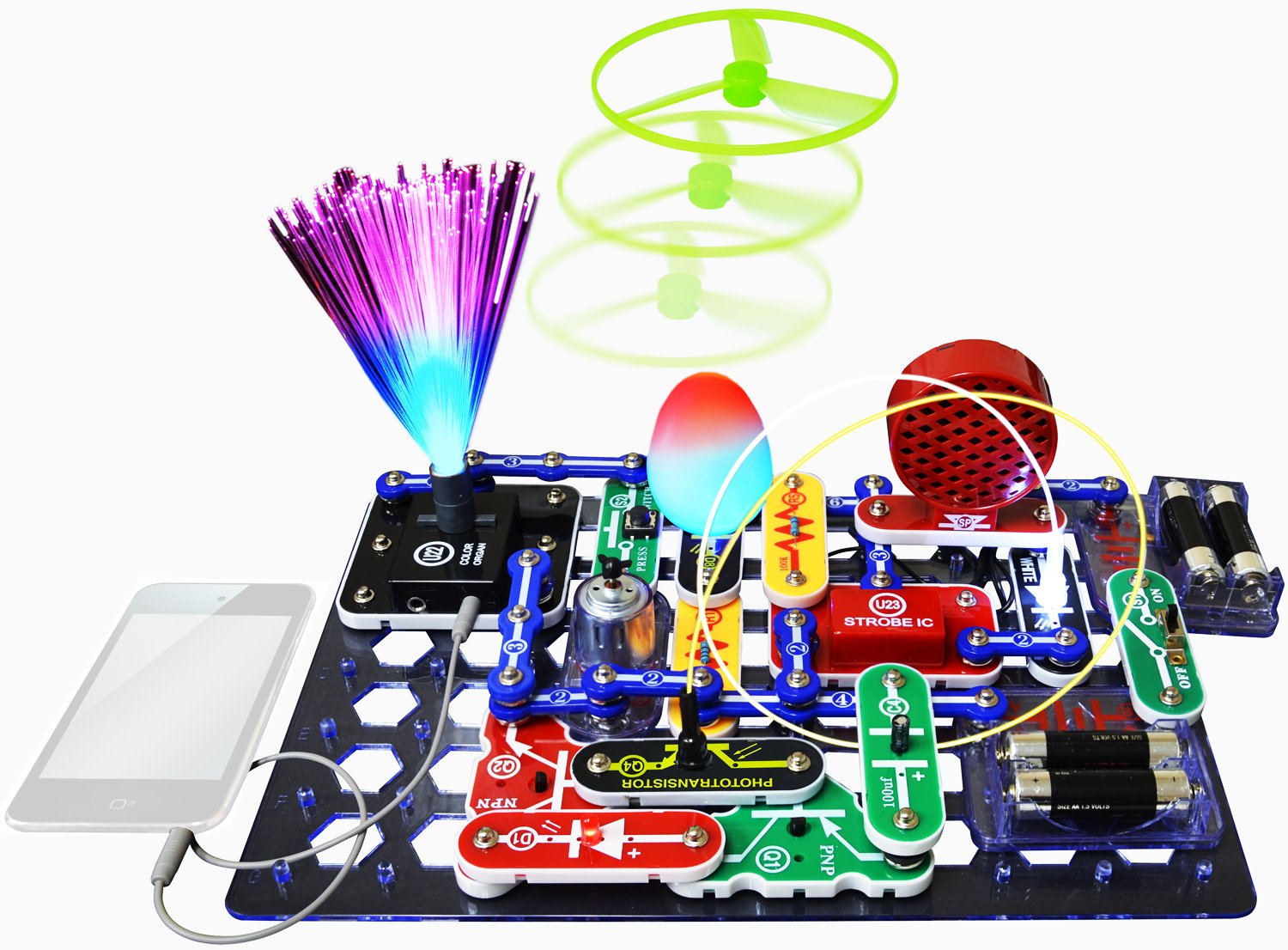 Remember learning about electricity and circuits
with those little light bulbs and circuit board that looked like something out
of the 1960’s? The ones that used red and black wires that looked like the ones
scattered around your grandpa's garage workshop, and you could never really
tell if it wasn’t working or if you just didn’t have the wire twisted
perfectly? There wasn’t much to them.
Remember learning about electricity and circuits
with those little light bulbs and circuit board that looked like something out
of the 1960’s? The ones that used red and black wires that looked like the ones
scattered around your grandpa's garage workshop, and you could never really
tell if it wasn’t working or if you just didn’t have the wire twisted
perfectly? There wasn’t much to them.
Well now there’s Snap Circuits. They clip
together and have all sorts of functionality beyond light bulbs. My nephew
recently got a Snap Circuits kit for Hanukkah, and the look of wonder on his
face was awesome to see (because who wants educational toys as a present? You
do if it’s fun!). From spinning motors, to little speakers, and even
multicolored fiber optics, there’s a lot of electric learning that happens with
a Snap Circuits set.
The base of snap circuits is a clear plastic
grid with letter rows and numbered columns. The little electronic modules snap
right onto the grid, or onto each other, to create all sorts of circuitry
combinations. The pieces are even color coded based on functionality. The fact
that everything plugs in and snaps into place is a benefit over the traditional
battery and wire circuits. No more danger of students stabbing each other with
wires or inaccuracy of the wired connection (is it touching? Is it not? Is this
light bulb dead? Am I just stupid?). The snaps of the circuit pieces are all
metal, so as long as you form a correct configuration, your contraption is sure
to work.
What makes Snap Circuits so cool for learning is
that they offer student
and teacher guides that go along with
their kits. The guides have easy to follow instructions and diagrams that
increase in difficulty as you go through the booklet. Project Lead The Way even
uses snap circuits in their Gateway program.
Another great feature of Snap Circuits is their Snap
Circuits Designer that lets students design their own snap circuit diagram to share
with their classmates, or even upload into the Kid Kreations
page of the Snap Circuits website. There, you can also download designs from
other users.
So, if you’re tired of the same old battery and light bulb, snap to it, and try out Snap Circuits in your classroom.


No comments:
Post a Comment
Note: Only a member of this blog may post a comment.